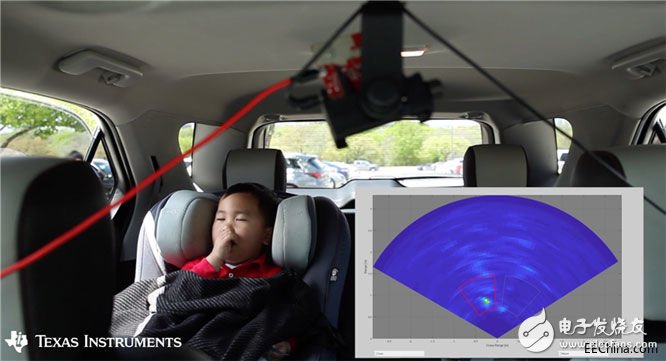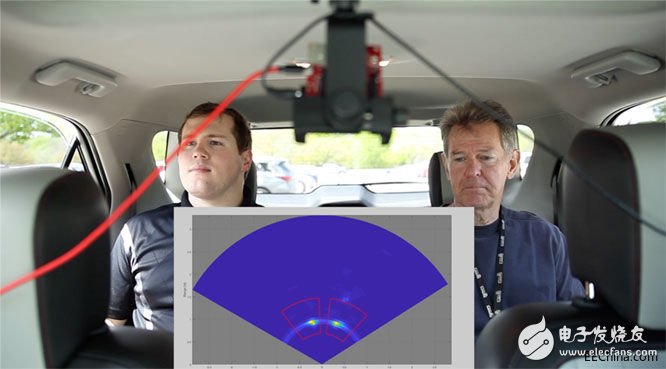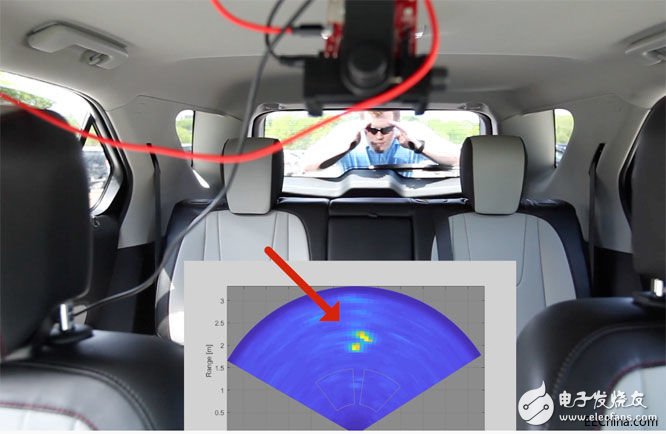Sensing technology is improving the safety and comfort of the car, and it is becoming more and more important to accurately determine the seating situation and position of the people in the car. According to statistics from San Jose State University, an average of 37 children die of heat in the car each year, of which "more than half (accidents) are caused by parents or guardians leaving their babies in the car." The millimeter wave (mmWave) sensing technology can detect the position of a person under extremely challenging environmental conditions (such as bright light and darkness). Different from other sensing technologies, millimeter waves are non-contact and non-interference, and can pass through materials such as plastic, drywall, and clothes, so that the sensor can be hidden behind the panel and placed in the car or other materials in the car. For example, ultrasonic sensors cannot distinguish between people and still life, and cameras cannot detect babies in bright or dark environments. The AWR1642 77GHz single-chip millimeter wave sensor with on-chip memory and digital signal processor is very suitable for the above applications, because it can sense very subtle movements, even breathing, and thus indicate the presence of someone. We use the AWR1642 evaluation module to demonstrate the situation in a static vehicle. For demonstration purposes, the sensor will be suspended from the sunroof towards the rear seat, as shown in Figure 1, although in real applications it is more likely to be placed inside the seat back, around the rearview mirror or on the roof. The entire detection process, including the algorithm to eliminate possible static clutter, is done on the sensor. In Figure 1, baby Max is sleeping on the child seat under a blanket. Although there is a blanket, the sensor can not only detect Max, but also accurately dial but its position is the right rear seat. Figure 1: The use of TI millimeter wave sensors for infant detection experiments in the car. The millimeter wave sensor is suspended on the skylight. The detection result is displayed as a heat map in the visualization chart. In Figure 2, two people sit side by side in the back seat. The two red boxes indicate that the millimeter wave sensor detects their location. Since the millimeter wave sensor can "see" and distinguish the human body from a long distance, the technology can be easily extended to detect the situation of vehicles with multiple rows of seats. Figure 2: TI's millimeter wave sensor can detect two passengers sitting in the back seat In Figure 3, the person outside the vehicle detected by the sensor may be an intruder. The sensors used to detect the loading conditions inside the vehicle can also detect nearby people. If advanced algorithms are used, it is very possible to distinguish people from moving objects such as branches in the wind. Figure 3: TI's millimeter wave sensor can detect possible intruders behind the vehicle The in-car occupant detection reference design using AWR1642 provides a system-level overview and reference software processing chain for detecting double-occupancy in the vehicle. The "TI Design Guide" describes the applied algorithm in detail. You can try samples in a laboratory or in an actual vehicle to detect the occupancy of a double seat. The sample is extremely easy to modify and can be extended to multi-person testing. Millimeter wave sensors not only provide solutions for advanced driver assistance systems (ADAS), but also for applications such as body, chassis, and cabin. Child testing is a special item in the European New Car Safety Assessment (Euro NCAP) project blueprint and is expected to be implemented in 2020. Both automotive original equipment manufacturers (OEM) and Tier-1 manufacturers are looking for a sensing technology that detects children in a non-contact and non-invasive manner. Other key factors include cost-effectiveness and solution form; millimeter wave sensors meet these conditions, it uses a single chip to optimize materials, small and compact size and high-resolution technology. I will look forward to seeing this sensing technology in my next car. you too?
The automobile cable is a kind of connecting wire inside the automobile, which is mainly used for current transmission of batteries, instruments, lamps, etc. Due to the particularity of the automobile industry, the manufacturing process of automobile cables is also more special than other ordinary wires. In most cases, it is required that the car cable will be cold and high temperature resistant.
Automobiles Wire,Automobile Insulated Wire,Pvc Insulated Automobile Wire,Automotive Copper Wire Ruitian Cable CO.,LTD. , https://www.hbruitiancable.com

